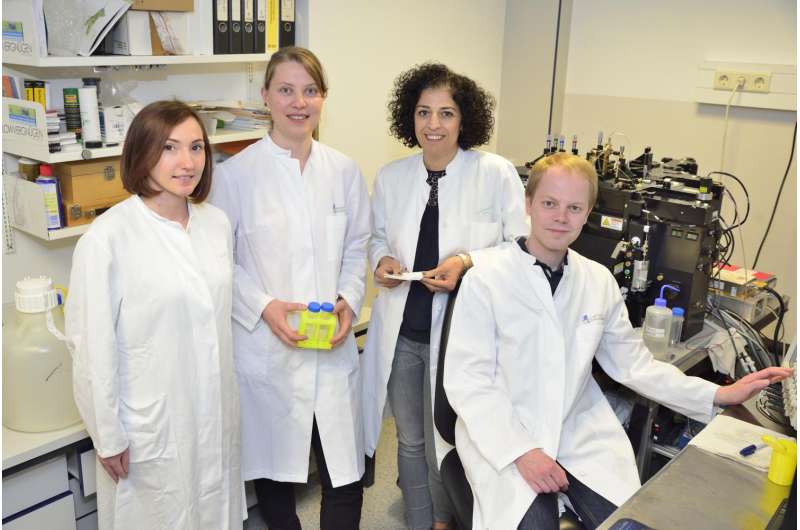Fighting life-threatening bacteria without antibiotics

Patients suffering from liver cirrhosis often die of life-threatening bacterial infections. In these patients the immune cells are unable to eliminate the bacterial infections. Scientist at the University of Bonn and TU Munich have now discovered that type I IFN released by immune cells due to increased migration of gut bacteria into the cirrhotic liver incapacitate the immune system. Based on their findings, such life-threatening infections can be contained by strengthening the immune response alone—without antibiotics. The results have now appeared in the journal Gut.
Each year, about 170,000 people die of complications of hepatic cirrhosis in Europe. Frequent causes of the widespread disease include alcohol abuse, fatty liver hepatitis, and chronic viral hepatitis. Liver cirrhosis develops gradually over a period of years and decades. Liver cells die and get replaced by connective tissue. The scar tissue blocks the flow of blood through the liver leading to increased pressure in the blood vessels in the intestine and thus to the leakage of intestinal bacteria, which reach the liver via the blood.
"About one-third of the fatal cases of hepatic cirrhosis are attributable to bacterial infections", says Prof. Dr. Jonel Trebicka, from the Department of Internal Medicine in the University Hospital Bonn, who is participating in the study and has been studying liver cirrhosis for many years. It has long been known that patients with hepatic cirrhosis have impaired immunity. The exact causes were largely unknown. The team of Dr. Zeinab Abdullah at the Institute for Experimental Immunology in the University Hospital Bonn and Prof. Dr. Percy Knolle from the Institute of Molecular Immunology in the Technical University Munich, together with colleagues from the Department of Internal Medicine, LIMES-Institute in the University of Bonn and the RWTH University Hospital Aachen has now discovered the processes behind the attenuation of the immune system.
Collapse of the immune function of the macrophages
In mice suffering from liver cirrhosis, the scientist observed a sustained production of Type-1 interferon in response to the intestinal bacteria by immune cells responsible for defense against infection, namely macrophages and monocytes in the liver. When these immune cells were then infected by a small number of the pathogenic bacteria, Listeria, the production of Type-1 interferon massively increased. As a consequence, the immune-regulatory factor interleukin-10 was release, which led to a defect in the anti-bacterial functions of the macrophages and thus to a fatal course of infections.
The scientists also performed these studies on human monocytes from the blood of cirrhosis patients. Dr. Zeinab Abdullah, a group leader at the Institute for Experimental Immunology in the University hospital Bonn said: "Following infection with pathogenic bacteria, we also observed highly elevated production of Type-1 interferon and interleukin-10 by monocytes from cirrhosis patients". "Our results identify the blind spot of the immune system that is responsible for the failure of the immune response to bacterial infections".
Approaches for new diagnoses and therapies
Further experiments identified new therapeutic options: Mice that are unable to produce Type-1 interferon were protected against Listeria infection despite the migration of the gut bacteria into the liver, because their immune cells didn't produce high levels of Type-1 interferon and IL-10 after Listeria infection. "The groundbreaking finding of our study is that we might be now able to treat a life-threatening bacterial infection without antibiotics, simply by strengthening the immune response", says Prof. Dr. Percy Knolle of TU Munich. According to the researchers, this give rise to hope for new therapeutic options. "When the formation of Type-1 interferon in the liver cells is blocked by suitable substances, there is a prospect of reinvigorating the immune system", adds Professor Knolle. However, this very promising approach must first be confirmed in clinical studies.
More information: Carl-Philipp Hackstein et al, Gut microbial translocation corrupts myeloid cell function to control bacterial infection during liver cirrhosis, Gut (2016). DOI: 10.1136/gutjnl-2015-311224

















